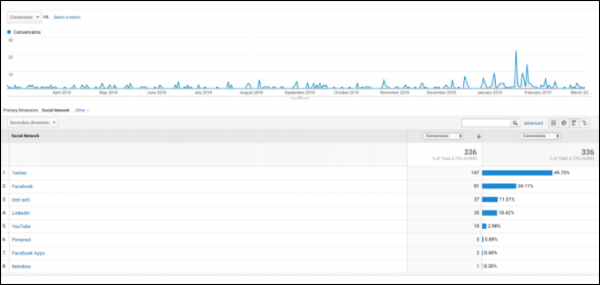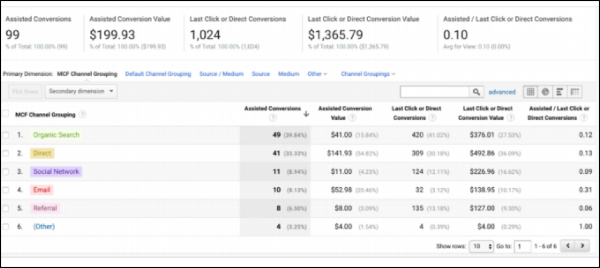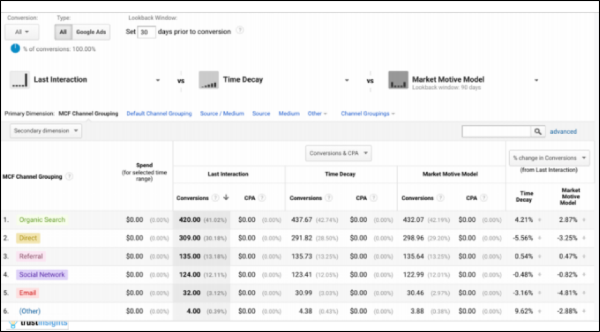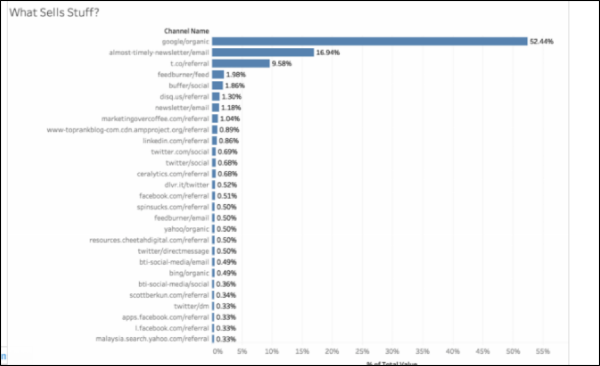
With the amount of data available today, you’d think that marketers would be confident in reporting the impact of their efforts. Unfortunately, a recent study from The CMO Survey found that the #1 C-suite communication challenge for marketers is STILL demonstrating the impact of their work on financial outcomes.
Part of the reason for this struggle is that while data is readily available, we aren’t tracking the right metrics, and may even struggle to understand how to set up proper tracking to access the information we need. And as we know, poor tracking leads to poor performance which leads to unhappy leadership teams.
In his presentation at Social Media Marketing World last week, Chris Penn took a deep dive into a framework for collecting high-quality data and the different options available for properly attributing the results of your marketing efforts.
What is Attribution Analysis?
First off, it’s important to define what exactly attribution analysis is and why it’s essential for showcasing impact.
For marketers, Wikipedia defines attribution as:
The identification of a set of user actions (“events” or “touchpoints”) that contribute in some manner to a desired outcome, and then the assignment of value to each of these assets.
Ultimately, this information helps marketers understand which touch-points (and in which order) lead to an engagement or conversion with your marketing. The next piece to the puzzle is to analyze the attribution data to determine how to scale or replicate marketing efforts based on what you know resonates with your audience.
What is attribution analysis? It is who gets credit. It’s all about proving cause and effect. Can you prove what you did had an impact? @cspenn #SMMW19 Click To Tweet
The Data Quality Framework
The first step to proper attribution analysis is to ensure that you have good data. Without it, you and your team will be making decisions based on information that is incorrect.
In his session, Chris provided a six-step framework to ensure that you have good data. According to his data quality framework, your information should be:
Clean: Prepared well and free of errors
Complete: No missing information
Comprehensive: Must answer the questions being asked
Chosen: Free of irrelevant or confusing data
Credible: Collected in a valid way
Calculable: Must be workable and usable by business users.
5 Methods for Marketing Attribution
#1 – Last-Touch Attribution
This is the stage that most of us are at. We open our Google Analytics, see what the last touch-point was and then make decisions based on that information. But as we know, there is much more to a purchasing decision than just one interaction.
Ease: Easiest
Accuracy: Lowest

Image via Chris Penn
#2 – Assisted Conversion Attribution
Slightly more advanced, assisted conversion attribution demonstrates the interaction that leads to the conversion (or last-touch). This helps demonstrate the value of an omni-channel approach and how it impacts conversions.
Ease: Easy
Accuracy: Low

Image via Chris Penn
#3 – Attribution Modeling
This approach takes more effort but can still be built and tracked in Google Analytics. Within the system, there are options for built-in models to get you started. Users can then navigate to the conversions menu and begin building their own attribution models. For example, you can tag a webinar you hosted and assign it 2x the value of another activity like a social conversion. It’s best to test a few different models and see how they behave.
Ease: Medium
Accuracy: Good

Image via Chris Penn
#4 – Machine Learning
The final two methods require a more complex approach and cannot be managed entirely through Google Analytics. Machine Learning will uncover how important different channels (such as organic search) are for your website. And with an advanced Machine Learning model, you can see how any one source is impacting the entirety of your marketing efforts.
Ease: Hard
Accuracy: Very Good

Image via Chris Penn
#5 – Deep Learning
This final method allows you to take all of the information you have and determine what the true path to conversion is. It provides multi-channel marketing attribution data in the most accurate way for making marketing decisions.
Ease: Very Hard
Accuracy: Excellent

Image via Chris Penn
Finding a Solution That’s Right for You
The first step is to identify the most important needs of your organization. That means, identifying a solution that you can commit to (and execute on) that follows a structured data quality framework.
But that’s just the beginning. It’s essential to ensure that you not only have the correct data but that it is presented in a way that your leadership team can absorb and make decisions based on your findings.
What have you found to be your biggest challenges in collecting data, showcasing the data or getting leadership buy-in?

Comments are Closed